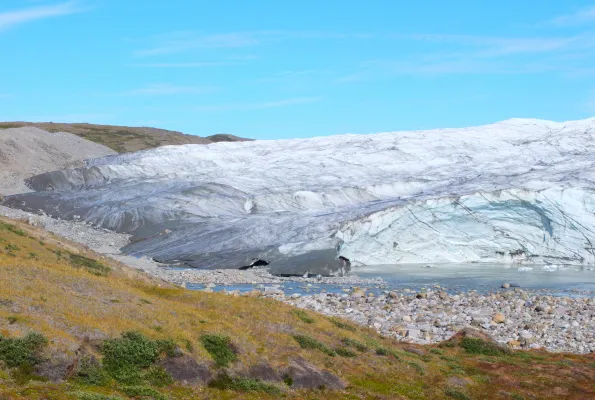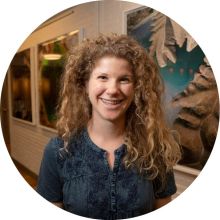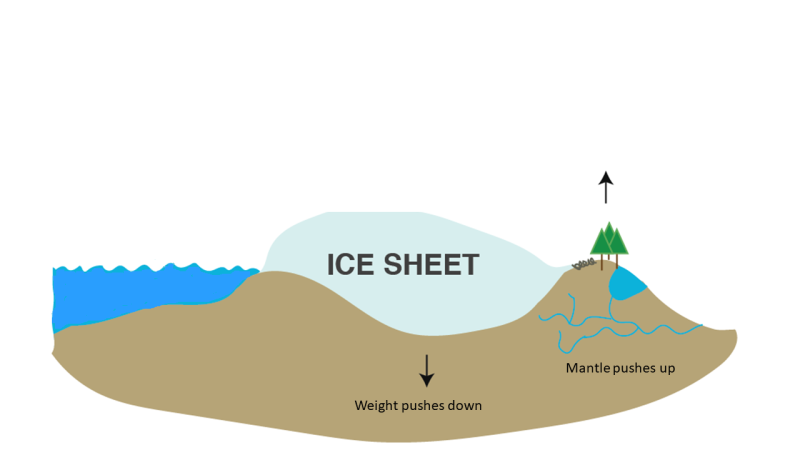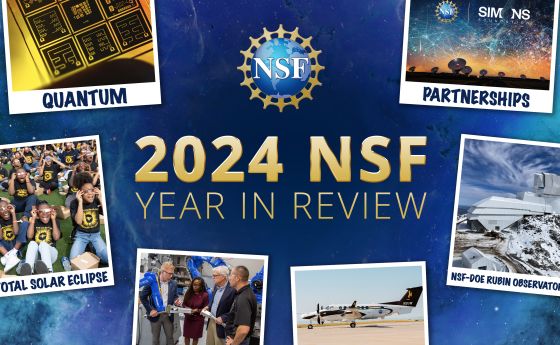
Promoting diversity and inclusivity in geoscience by confronting its past
Tamara Pico is an assistant professor in earth and planetary sciences at the University of California, Santa Cruz whose NSF-funded research involves reconstructing ice sheets from the past. She studies how the Earth's surface deforms under the weight of ice sheets and uses this information to calculate ancient sea levels.
During ice ages, as ice sheets grow, their weight pushes down on the Earth's crust, causing the mantle – which can act much like a viscous fluid moving in slow motion – to flow towards the edge of the ice sheet. Then kilometers away from the ice sheet, sections of the crust are then lifted by the movement of the underlying mantle. By understanding how ice sheets and sea level changed during and between ice ages, scientists can gain insights into how climate change may affect sea levels in the future.
Pico is also affiliated with the university's Science & Justice Research Center -- an interdisciplinary group that brings together researchers interested in science and social justice. During Pico's graduate work, she took a secondary concentration in feminist studies for her doctorate. Her interest in gender equity led her to conduct research into representation of female scientists in geoscience publications. She found that women represent only 13-30% of lead authors. This translates to about half the rate of publication one would expect, considering the proportion of female researchers in geosciences.
Discovering the troubling past of geological studies
Pico's work writing articles about cultures in geoscience sparked an interest in how race and colonialism influenced early geological studies in the United States.
One of the early geologists she studied was Nathaniel Southgate Shaler, a professor in paleontology and geology at Harvard in the second half of the 19th century. and eventually became the president of the Geological Survey of America.
However, Pico also discovered that he was a strident supporter of slavery and a white supremacist. "He wrote that the North American continent is destined for slavery -- that [it] was destined for Anglo-Saxons to come and have slaves work the land. I was just shocked!" Pico said. " That's what got me thinking about race and geology."
Promoting a more inclusive geoscience field
In undergraduate courses, these early geoscientists are often glorified, but their entanglement with the history of colonialism, slavery and other unpleasant politics is rarely -- if ever -- covered. Because of this, Pico and her colleagues developed the GeoContext curriculum to highlight this sometimes murky side of geology's past.
"I think students feel that science is a very exclusive place," Tamara said. "It's a place that's not welcoming to many people. That's not something you have to tell students. They can feel it. But giving them a little bit of this history of why it's the way it is, I think can give them something to stand on, to better see and understand the landscape."
Tamara was recently invited to the NSF's 3rd Annual Frontiers of Ocean Sciences Symposium to talk about her research on ice sheets and sea levels, as well her work on diversity and inclusion in the geosciences and the GeoContext curriculum.
NSF has been a leader in trying to tackle the issue of diversity and inclusion in science and has been developing initiatives to promote diversity specifically in the Geosciences field for decades. NSF's Geosciences Opportunities for Leadership in Diversity program was recently developed to broaden participation in geoscience and to develop unique approaches for greater inclusion in the geoscience education and research communities. NSF also seeks to promote diversity across other science fields via programs such as NSF INCLUDES -- or Inclusion across the Nation of Communities of Learners of Underrepresented Discoverers in Engineering and Science. In fact, the Science & Justice Research Center, which Pico is currently affiliated with, grew out of an NSF-funded science and justice award to UC Santa Cruz.
I think students feel that science is a very exclusive place. It's a place that's not welcoming to many people. That's not something you have to tell students. They can feel it. But giving them a little bit of this history of why it's the way it is, I think can give them something to stand on, to better see and understand the landscape. – Tamara Pico
One particularly successful NSF-funded initiative to address diversity in the geosciences is the Unlearning Racism in Geoscience, or URGE, program. Developed by Vashan Wright, an assistant professor at Scripps Institution of Oceanography, URGE is designed to deepen the scientific community's knowledge of the effects of racism on the participation and retention of Black, Indigenous and people of color in geoscience by drawing on existing literature, expert opinions and personal experiences. The program aims to discuss and develop anti-racism policies and strategies within a dynamic community network. Pico is a contributor, having shared information on her research on the history of racism and colonialism in the geosciences.
In 2016, just 6% of geoscience doctorates awarded to U.S. citizens and permanent residents were to students from underrepresented minorities, despite this group making up 31% of the U.S. population. By highlighting truths about racism and colonialism in the history of geology, Pico hopes that it will lead to greater understanding of geology's roots and to increased efforts to make the field more inclusive and supportive to all students.





